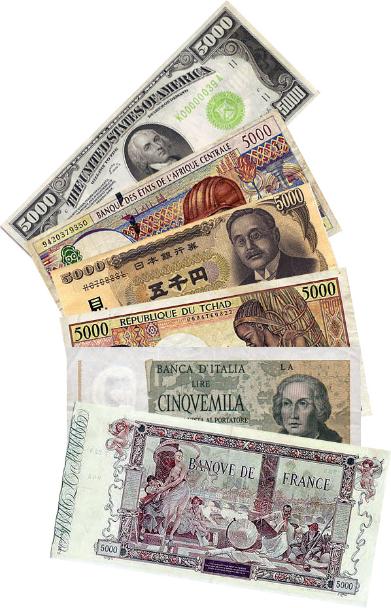BankNotes History
 | A banknote (often known as a bill, paper money or simply a note) is a type of negotiable instrument known as a promissory note, made by a bank, payable to the bearer on demand. When banknotes were first introduced, they were, in effect, a promise to pay the bearer in coins, but gradually became a substitute for the coins and a form of money in their own right. Banknotes were originally issued by commercial banks, but since their general acceptance as a form of money, most countries have assigned the responsibility for issuing national banknotes to a central bank. National banknotes are legal tender, meaning that medium of payment allowed by law or recognized by a legal system to be valid for meeting a financial obligation.[1] Historically, banks sought to ensure that they could always pay customers in coins when they presented banknotes for payment. This practice of "backing" notes with something of substance is the basis for the history of central banks backing their currencies in gold or silver. Today, most national currencies have no backing in precious metals or commodities and have value only by fiat. With the exception of non-circulating high-value or precious metal issues, coins are used for lower valued monetary units, while banknotes are used for higher values. The idea of a using durable light-weight substance as evidence of a promise to pay a bearer on demand originated in China during the Han Dynasty in 118 BC, and was made of leather.[2] The first known banknote was first developed in China during the Tang and Song dynasties, starting in the 7th century. Its roots were in merchant receipts of deposit during the Tang Dynasty (618–907), as merchants and wholesalers desired to avoid the heavy bulk of copper coinage in large commercial transactions.[3][4][5] During the Yuan Dynasty, banknotes were adopted by the Mongol Empire. In Europe, the concept of banknotes was first introduced during the 13th century by travelers such as Marco Polo,[6][7] with proper banknotes appearing in 17th century Sweden. |